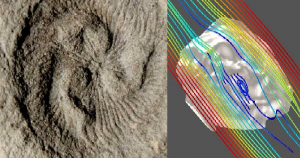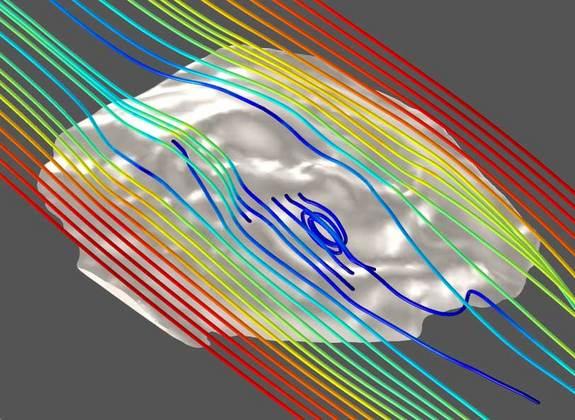
Ancient 3-Limbed Sea Creature Reveals Information About Earth’s Early Ecosystem
Scientists detailed an ancient, strange-looking sea creature (Tribrachidium) that does not resemble any marine animal alive or dead probably used its unique shape to collect and feed on drifting particles from the ocean.
According to a study in Science Advances reports, Tribrachidium had three limbs, all of which were mirror images of one another. Like humans have two-fold or bilateral symmetry, and starfish have five-fold symmetry, this organism had three-fold symmetry, a feature not seen in anything alive today. Tribrachidium existed some 550 million years ago during the late Ediacaran period. It lived in shallow seas and had a disc-shaped body with three tentacle-like arms protruding from its flat top.

“Because we have no obvious modern comparison, that’s made it really hard to work out what this organism was like when it was alive — how it moved, if it moved, how it fed, how it reproduced,” said Imran Rahman, a research person who led the study at the University of Bristol.
“Tribrachidium doesn’t look like any modern species, and so it has been really hard to work out what it was like when it was alive. The application of cutting-edge techniques, such as CT scanning and computational fluid dynamics, allowed us to determine, for the first time, how this long-extinct organism fed,” said Dr Marc Laflamme, an Assistant Professor at the University of Toronto Mississauga.
While no evidence exists that Tribrachidium could move, researchers speculate it fed by absorbing dissolved nutrients from the water. Tribrachidium used a feeding method known as “suspension feeding,” which entailed using its limbs to grab food floating by in the water. Fluid dynamics did show that Tribrachidium was most likely a suspension feeder, meaning it ate floating organic particles out of the water–a group that includes brittle stars, bivalves and certain types of crustaceans.
“Suspension feeding mobilizes organic material that was being carried around in the water column,” Rahman said. “It can increase passage of sunlight through water and potentially increase oxygenation, as well,” he added. They tested this by using a cast of a Tribrachidium fossil to create a 3D digital model of the organism. Then, the team subjected the digital model to virtual currents that mimicked an ancient, shallow seafloor environment.

“For many years, scientists have assumed that Earth’s oldest complex organisms, which lived over half a billion years ago, fed in only one or two different ways,” study co-author Simon Darroch, an assistant professor at Vanderbilt University, said. “Our study has shown this to be untrue; Tribrachidium and perhaps other species were capable of suspension feeding. This demonstrates that, contrary to our expectations, some of the first ecosystems were actually quite complex.”
This is a very exciting discovery because it is the first time scientists have had solid evidence of suspension feeding in organisms from the late Ediacaran period. Though Tribrachidium was very strange, other Ediacara creatures had equally weird body designs. Some were disc-shaped while others looked like fronds, Rahman said. The team’s findings were recently published in the journal Science Advances.